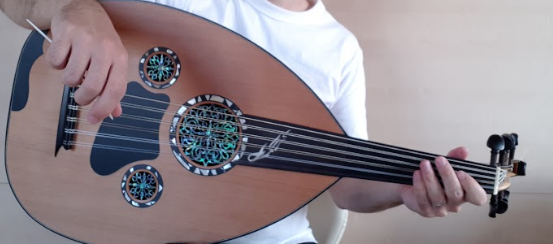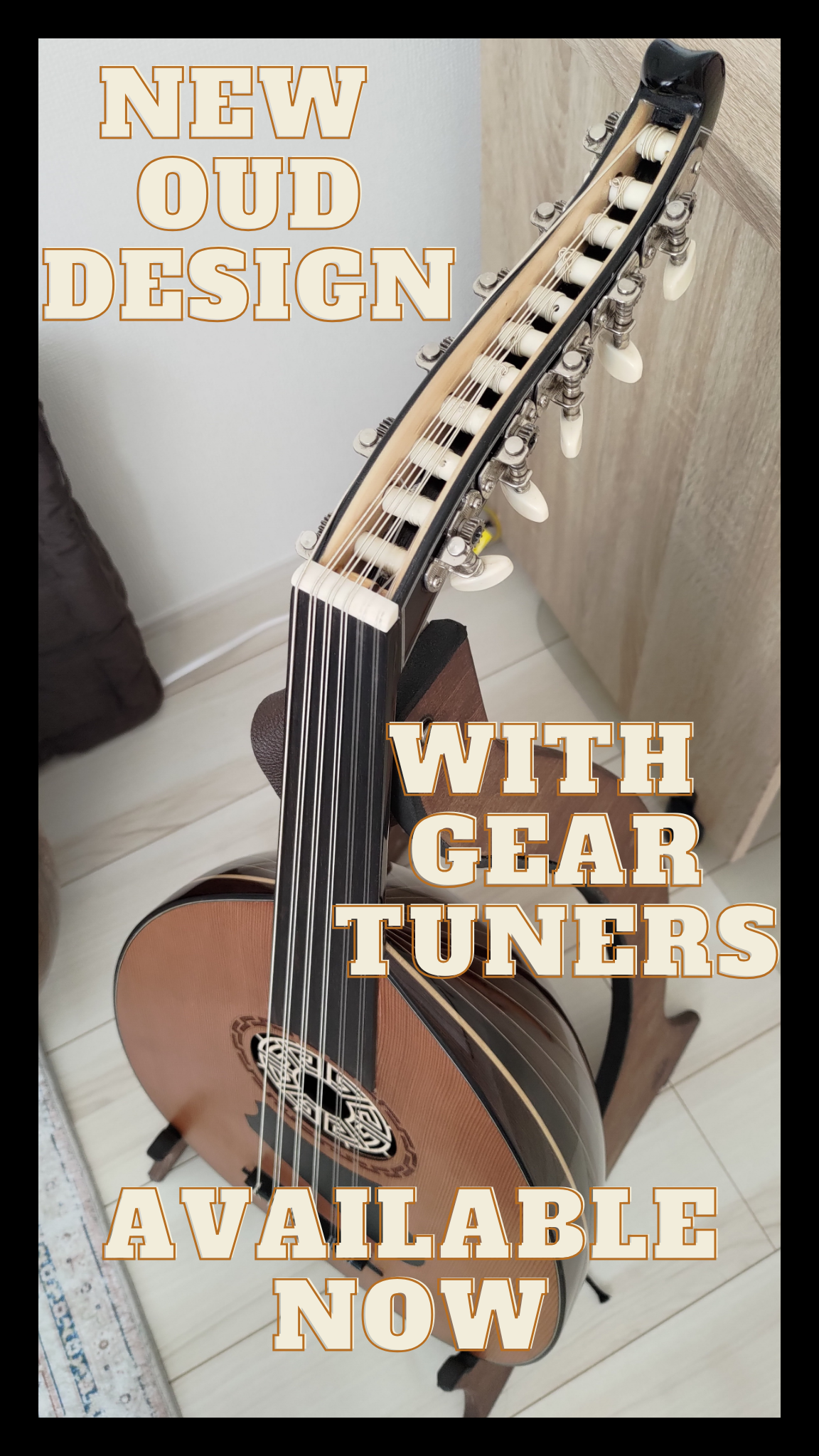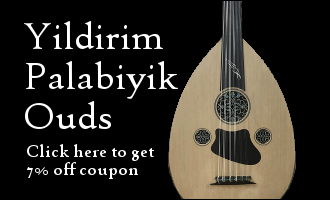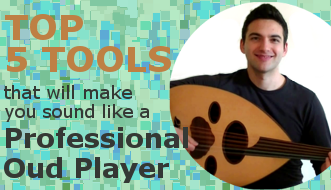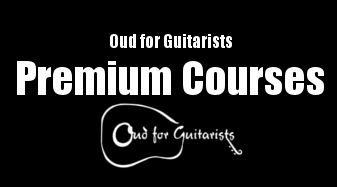Struggling to understand how maqams work?
Can’t seem to figure out how they work together in a piece?
Don’t worry, you’re not the only one who is mystified by the world of maqam.
In fact, that’s one of the biggest challenges for Oud learners and other Middle Eastern musicians.
But it’s also an indicator that your understanding of Arabic music is coming to a mature level, so you should give yourself a pat on the back!
So I put together this crash course in hopes to introduce you to maqam music and how to work with it in a non-intimidating way possible, so you can learn maqams step by step without feeling overwhelmed.
Table of Contents:
Lesson 1: Why you DON’T have to learn all maqams
Lesson 2: Maqam = Scale? Not really.
Lesson 3: The 6 Jins you MUST know to sound like a good Arabic musician
Lesson 4: The Easiest Way to Modulate between Maqams
Lesson 5: How to Sound Native (hint: it’s NOT knowing 50 maqams)
Next Step: The Secret Technique to Internalize Maqams
Lesson 1: Why you DON’T have to learn all maqams
Learning maqam can be intimidating. There are A LOT out there
Do you have to learn them all before you can play the Oud?
Absolutely not!
To get you started on your maqam journey, have a listen to this Middle Eastern medley. I used only 1 maqam here, and it’s Maqam Hijaz.
So do you have to learn all maqams to play the Oud or the Middle Eastern musical instrument of your choice?
No. So don’t feel overwhelmed!
But does it make your music rich and authentic if you know more than 1 maqam?
Definitely!
With that in mind, let me explain to you the common misconception about maqams.
Lesson 2: Maqam = Scale? Not really.
So you probably heard “maqam = musical scale.”
And did you know this idea can hinder you from learning maqams?
In this video, you will see a more accurate way of looking at maqam so you can learn maqam music properly and more easily, and start playing them authentically.
If you’re new to maqams, the concept of intervallic structure and jins may sound dry…. and it’s okay! I’m not the logic type of a person. I naturally go by how I feel, and I still managed to get this far with maqams!
Just understand how the system works, and try to listen for the feel of different jins.
But of course, don’t overwhelm yourself by tackling dozens of jins simultaneously. Let me get you started with these superstar jins.
Lesson 3: The 6 mini scales you MUST know to sound like a good Arabic musician
Get your instrument out now, and follow along this video:
Here I used the word “mini scale” for convenience, but you know what ajnas/jins are by now.
So the 6 jins presented here (starting from C for easy comparison) are the following:
- Jins Ajam – four notes closely resembling the first four notes of the major scale. C D E F.
- Jins Nahawand aka Busalik – most closely related to the first four notes of the minor scale. C D Eb F.
- Jins Kurd – most resembles the first four notes of the phrygian mode. C Db Eb F.
- Jins Hijaz – like an augmented/harmonic minor scale. It has that demonic flavour to it. It’s characterized by a large interval between the 2nd and 3rd notes. C Db E F. In some cases the interval between the 2nd and 3rd notes is smaller, that really makes these notes quartertones.
- Jins Rast – really close to the first five notes of a major scale, except the third note, the third degree is flattened by a quarter. This note is between E natural and E flat. C D Eqb F G. You can also call this note half-flat, it’s up to you.
- Jins Saba – not found in western music. It’s characterized by smaller intervals. C Dqb Eb E.
Then you can put these jin together to make different maqams.
When I learned how jins are put together, this blew my mind. Because before this, I always viewed scales as a set of 7 notes, and these 7 notes just did their thing. Each one had its place. But now I see that these mini scales – jins – build upon each other and create systems. And each one has its own colour, tone, and feeling. For example….
Maqam Ajam (C Major Scale)
If you take Jins Ajam starting on C, C D E F, and you add another Jins Ajam starting on G, G A B C, with the same intervals, you get Maqam Ajam. Does it look familiar to you? It’s quite basically the C major scale.
Maqam Hijaz Kar
If you take Jins Hijaz starting on C, C Db E F, and you add another Jins Hijaz to it starting on G, G Ab B C, you get Maqam Hijaz Kar.
Maqam Shawq Afza
If you take Jins Ajam starting on Bb, Bb C D Eb, and you add another Jins Hijaz starting on F to it, you get Maqam Shawq Afza. It’s like half major scale half harmonic scale.
So even with those 6 jins, you can get many maqams to play with. And of course, there are combinations you can and can’t use, and if you want to dive into learning maqams deeply, I highly recommend you check out the Maqam Mastery Program.
Lesson 4: The easiest way to Modulate between maqams
So now that you know some jins and maqams, what is modulation?
Modulation is how you move from a maqam to another maqam in a piece and there are rules around how to modulate between maqams.
Seasoned Oud players would string various maqamat together flawlessly and create a beautiful piece.
Now, because we have over 50 maqams to deal with, learning rules for each maqam is overwhelming, and not practical.
But using jins, you can learn general principles that help you anticipate modulations and even create your own modulations.
One of the easiest examples is modulation using Jins Rast. See how in this video.
As you can see, using Jins Rast seems to neutralize the Maqam played before it making it easier for your ear to digest modulating into another maqam.
That’s really all there is to modulation – finding ways to change the maqam without sounding too sudden. The greatest modulations are sneaky!
Like I mentioned, there are various rules for modulating between maqams, and if you want to learn them, I show these principles in detail in the Maqam Mastery Program.
Lesson 5: How to Sound Native (hint: it’s NOT knowing 50 maqams)
Even after studying maqams and notes that create different jins, you may feel like your playing doesn’t sound quite like an Arabic musician’s.
If so, you may be missing a really crucial factor of maqam learning. Check out this video.
Like I mention in this video, it’s those idiomatic phrases that make you sound native or authentic, NOT just hitting random notes in a maqam.
So how can you find those idiomatic phrases?
Just like every language, maqams have a whole bunch of idiomatic phrases or vocabulary, and normally, one must listen to lots of music, identify maqams, and figure out the idiomatic phrases.
But an easier way is to learn those idiomatic phrases and melodic patterns from my Maqam Mastery Program. I’ve distilled the most common melodic developments in the most widely used maqams. Following the program will help you navigate the essence of different maqams and show you key modulation points and conventions.
Next Step: The Secret Technique to Internalize Maqams
As we’ve seen in these lesson, in order to be able to play the Oud or other Middle Eastern instruments to express yourself, you need to learn the melodic grammar and vocabulary of maqam and how to develop melodies and make modulations authentically.
You know you’ve mastered a maqam when you internalize it.
It’s like you’ve mastered a language when you start to dream in the language.
But getting to that level takes a while.
In fact, it took me many years to tell different maqams until I accidentally learned a technique.
This technique was the major breakthrough for me when I was learning maqams, and it changed the way I hear maqams forever.
Next week I’ll share my secret technique for learning and internalizing maqams. I’ll be sharing the technique with my newsletter subscribers only, so if you’re curious, sign up for my newsletter below.
Sign up to learn the secret maqam technique!
It’s so simple yet really effective. It can be used by any instrumentalists and especially vocalists.

